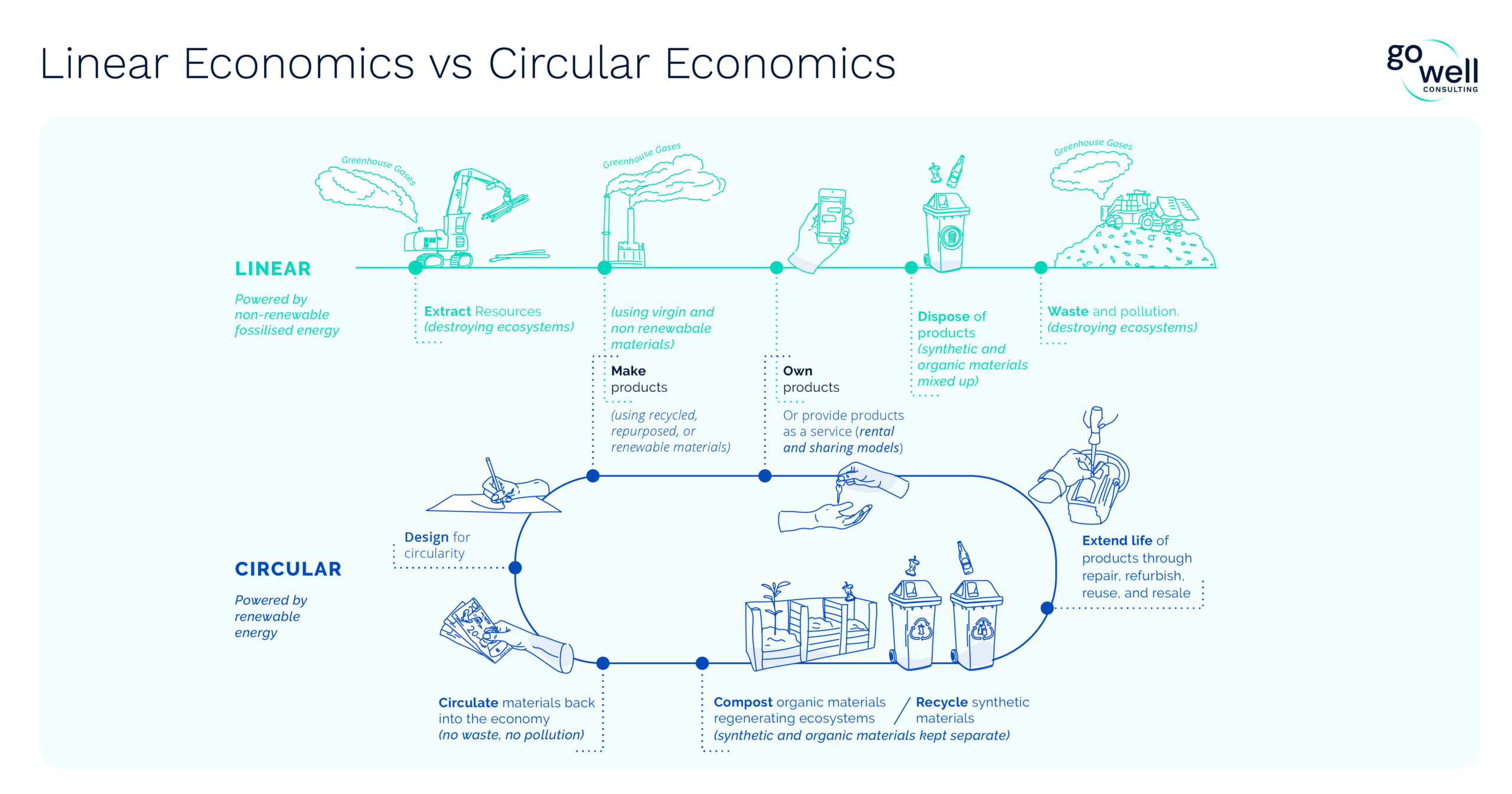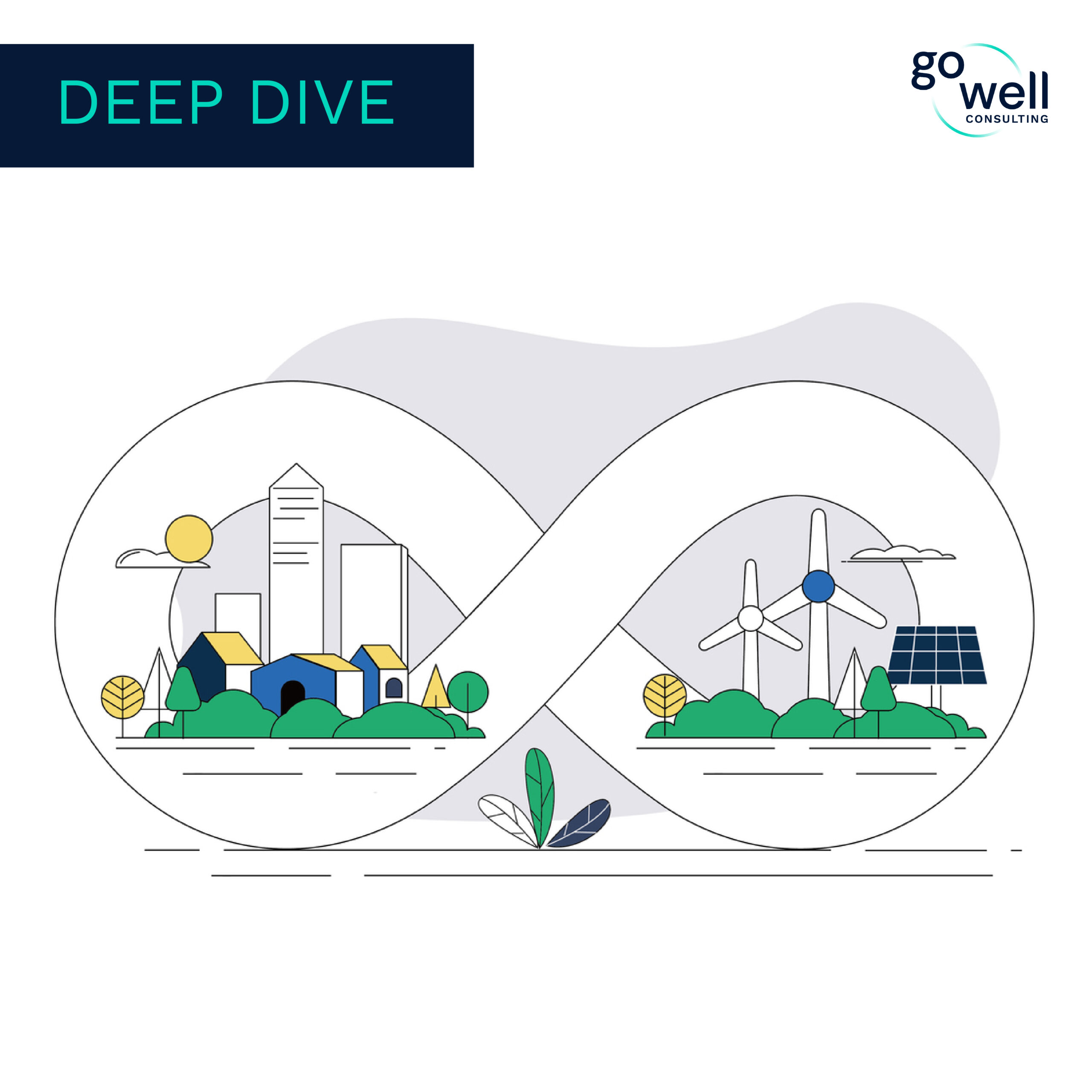Did you know that only 7.2% of materials in the global economy are cycled back into use, meaning over 90% of extracted resources are wasted after a single use? And that the global economy is consuming 100 billion tonnes of materials a year? Our current linear economy — where we take, make, and waste — is outdated and unsustainable. Besides, life on this planet is sustained by circular systems. It is a water cycle, a carbon cycle, a LIFE cycle. If we are to continue to sustain life on this planet, let alone advance our societies, we simply have to life in harmony with these circular systems – and that means operating a circular economic system.
“Growth in materials use, coupled with the environmental consequences of material extraction, processing and waste, is likely to increase the pressure on the resource bases of our economies and jeopardise future gains in well-being.” – Angel Gurría, OECD Secretary-General

The circular economy offers a smarter alternative: designing out waste, keeping materials in use, and regenerating natural systems. It’s about moving beyond recycling and fundamentally rethinking how we produce and consume — through eliminating waste at the design stage and reusing, repairing, and remanufacturing products. For businesses, this shift isn’t just about reducing environmental harm — it’s a chance to cut costs, build resilience, and meet growing consumer demand for sustainable solutions.
Momentum around the circular economy is building globally, with governments introducing policies to encourage repair, reuse, and resource recovery and businesses waking up to the huge opportunities this creates for those who are willing to do things differently. In Aotearoa New Zealand, the proposed Right to Repair Bill recently passed its First Reading, which aims to give consumers and businesses greater access to repair services and spare parts, helping extend product lifespans, save money, and reduce unnecessary waste and greenhouse gas emissions. (We’re proud to have collaborated with a number of other sustainability experts to write an open letter to MPs urging them to back this Bill; you can make your own submission to support Right to Repair Bill here. )
Internationally, countries and industries are setting ambitious circularity targets, from the European Union’s Circular Economy Action Plan to major brands like Apple and IKEA investing in circular systems. These developments signal a clear shift: businesses must start integrating circular principles to remain competitive and compliant with emerging regulations.
Embracing circular business models isn’t just good for the planet — it’s a major economic opportunity. Research shows that the circular economy presents an economic advantage worth US$4.5 trillion globally (and NZ$8.8 billion for Auckland alone) through reducing wasted resources, optimising material lifecycles and consumer demand. Beyond financial gains, businesses that embed circularity can build stronger customer loyalty, comply with emerging regulations, and reduce risks associated with resource scarcity. The companies leading this transition aren’t just future-proofing their operations — they’re unlocking new revenue streams and competitive advantages. An example is Renault, who established ‘RE:Factory’, Europe’s first dedicated circular economy in 2020; RE:Factory remanufactures vehicles parts, which has significant environmental benefits (such as typical savings of 80% less energy and 70% less waste than manufacturing virgin parts), while offering their customers more affordable options that increase retention. Another example is IKEA, who introduced a Buy Back & Resell program, which allows customers to return used furniture for resale or recycling, which has strengthened brand loyalty and customer retention, while diverting thousands of tonnes of furniture from landfills; in Australia alone, IKEA accepted over 22,500 pre-loved IKEA products through its Buy-back service in 2023, which were resold or donated, contributing to the diversion of over 640,000 products from landfill. In both these examples, not only did both companies engage their customer base and significantly reduce resource use and waste, but they improved supply chain resilience by reducing reliance on finite resources.
Despite all the clear and obvious benefits to a circular economy, and the harm and damage of our existing linear system, the shift to a circular system remains stubbornly slow. According to the Circularity Gap Report 2024, the share of secondary materials consumed by the global economy has decreased from 9.1% in 2018 to 7.2% in 2023 — a 1.9% drop over the course of five years. The biggest obstacle holding back this economic transformation is ingrained mindsets and an inability to visualise doing things a different way. Something about an old dog and new tricks?
Yet the globally economy has been through many great transformations already, and it is simply a part of natural evolution that it will continue to transform. After all, there are some inconvenient natural laws of physics, biology, and chemistry that are forcing our hand.
At Go Well Consulting, we support businesses in making this transition by building their knowledge, confidence and capability with circular economics as well as providing practical guidance and tailored solutions. Our strategies help businesses path a course to become circular. Our bin audits help organisations understand their landfill and recycling composition and identify opportunities for reduction and recovery. Our carbon mapping and reduction plans help business understand where their emissions are coming from and what they can do to reduce them. We also help businesses visualise and/or develop circular initiatives, such as Nature Baby’s Worn Again pilot takeback programme and Absolute Essential’s packaging takeback scheme, and we also assist organisations with packaging design and implementation to reduce waste and improve recyclability. For a fantastic example of this check out Emma Lewisham and their circular packaging design.
Understanding and adopting circular economy principles is no longer just an environmental responsibility — it’s a business imperative. Companies that embrace circularity can unlock efficiencies, strengthen brand reputation, and future-proof their operations in an evolving regulatory landscape. As expectations from consumers, investors, and governments continue to rise, the time to act is now. Is your business ready to start evolving for the sustainable future? Let’s talk.
Written by Go Well Consulting Sustainability Consultant, Kate Lodge.

